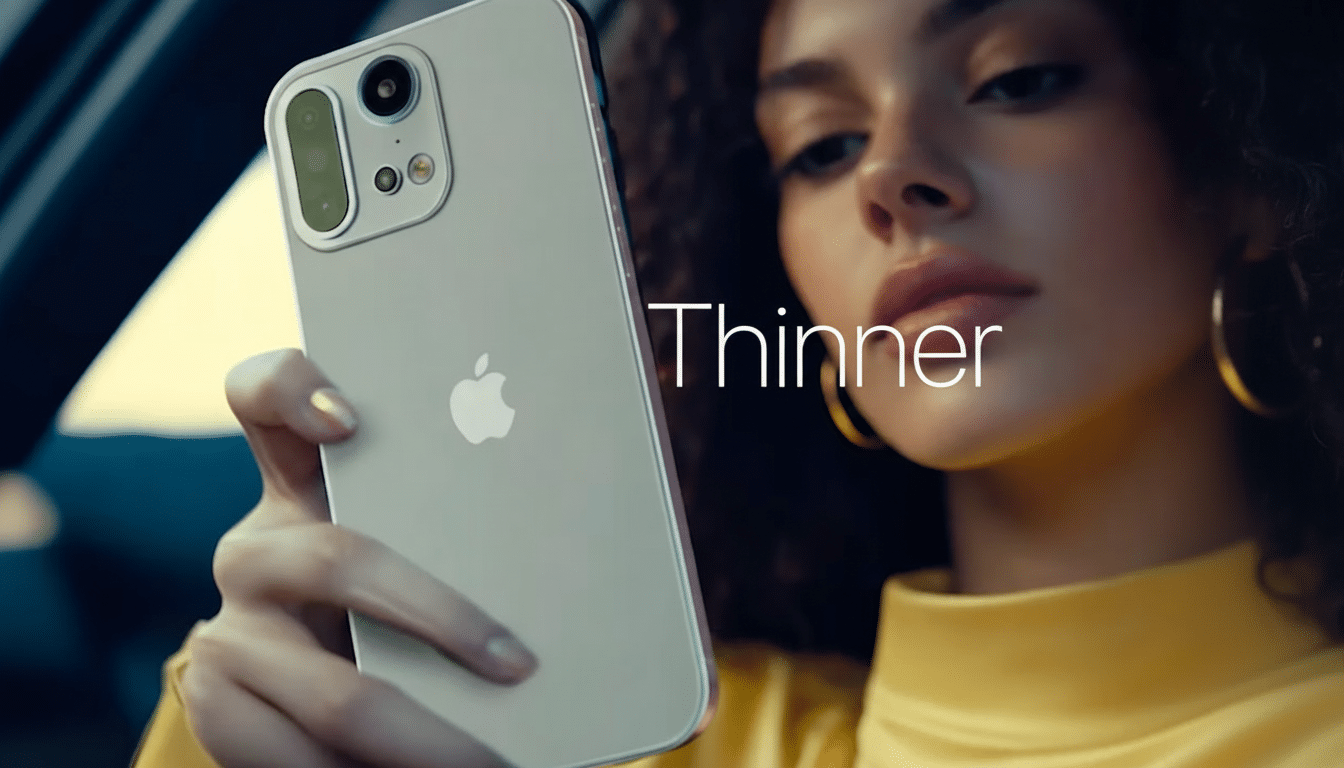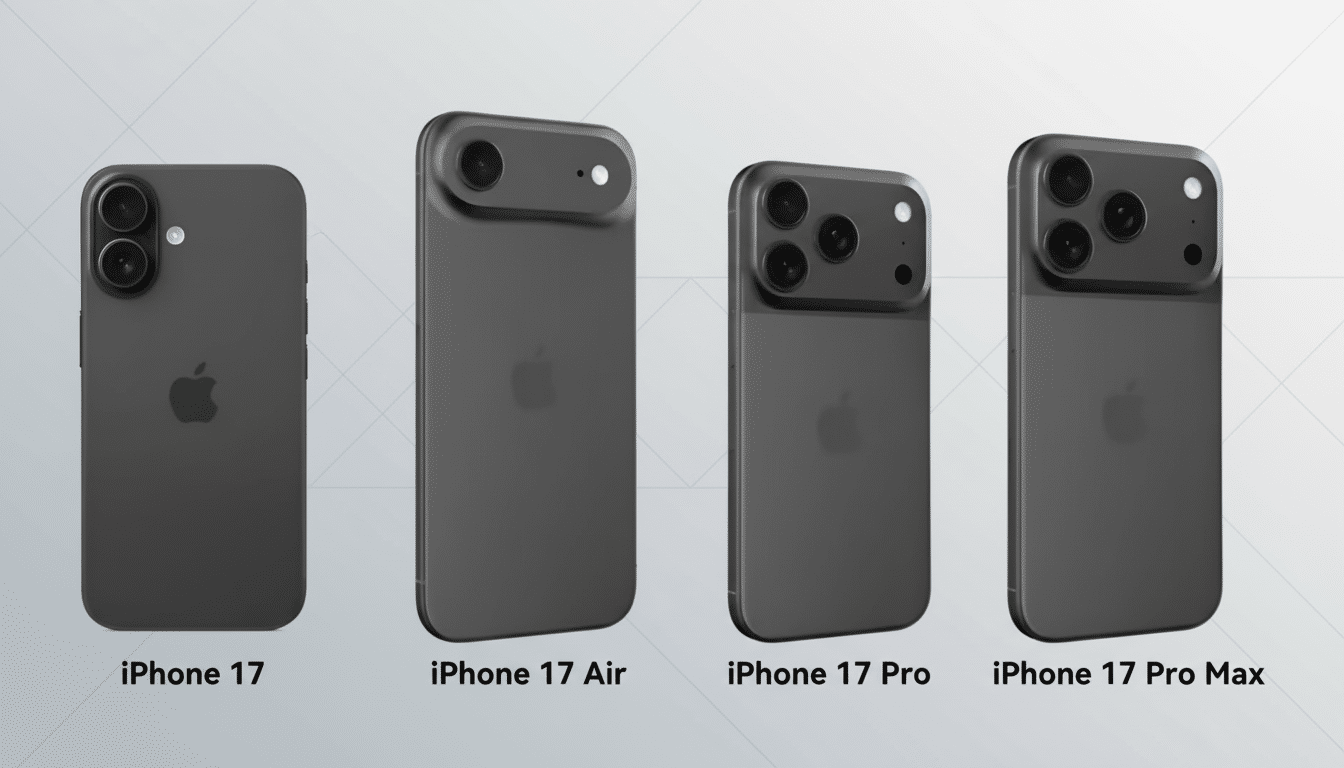For a week, I’ve been alternating between using the iPhone 17 Pro and iPhone 16 Pro to determine who should upgrade or who should keep their money. Apple’s new Pro phone hammers away at durability, cooler performance and outdoor visibility — pain points with the 16 Pro for some users. The result is a deliberate but focused step forward, not an all-out reinvention.
Design and durability
Apple is selling the iPhone 17 Pro as its most durable yet. The front employs Ceramic Shield 2, which Apple says is up to three times more break-resistant than the prior cover glass. The rear receives a thicker cover of Ceramic Shield, which the company says is up to four times stronger than in the past. If tiny hairline scuffs on your 16 Pro drive you nuts, have at it: This is an instant quality-of-life upgrade.

This time around, the new model shifts to an aluminum chassis to create a wider color palette yet it still feels dense, with mass-oneness. The trade-off: weight creeps up. My scale weighed the 17 Pro at approximately 206g compared to approximately 199g for the 16 Pro. If you value the absolute lightest Pro possible, the 16 Pro still has an edge.
Display and outdoor readability
This is the day-in, day-out contrast that I’ve perceived as the most striking. The iPhone 17 Pro’s panel should be able to hit a peak of between 2,500 and 3,000 nits outside compared to the approximate 2,000 nits on the 16 Pro. As part of Ceramic Shield 2, Apple also adds a seven-layer anti-reflective treatment. In practical use, that translates to fewer times wiping smudges just to be able to see the screen, much less glare in harsh sun and better mapping and camera previews when you’re outdoors.
For you commuters and travelers, that jump in brightness isn’t marketing hot air; it does make you feel a lot more confident using the phone in midday light. Meanwhile, the 16 Pro will still look excellent indoors, but can look washed out when sunlight is cast across the glass at an angle.
Performance and thermals
Inside, the iPhone 17 Pro is powered by Apple’s A19 Pro and introduces a vapor chamber for heat transfer. Apple boasts up to 40 percent improved sustained performance compared to its predecessor and repeatedly compared the thermal fooprint to “MacBook Pro–level” compute in a phone. The pitch isn’t entirely marketing: the variation comes in the form of longer game sessions, 4K video recording, and on-device AI tasks: the 17 Pro runs cooler for longer, delivers better frame rates, and throttles later than the 16 Pro.
If you edit ProRes clips, export large batches of photos or, yes, are going to lean into upcoming on-device generative features, the thermal design alone is a near case for upgrading.
For most uses, both feel plenty snappy, but it’s obvious the 17 Pro is more designed for sustained workloads.
Cameras and creator features
Up front, the headline shift is a new 18MP selfie camera, with Center Stage support and what Apple calls “ultrastabilized” video. Center Stage, a tablet-food of old for the iPad, uses an artificial intelligence system to reframe and keep you centered as you move, which is great if you’re cooking, working out, or performing a live demo. It also does good work at stabilization when running or panning; the result is significantly steadier footage than what the 16 Pro’s front camera captures.

On the back, Apple maintains the versatile triple-camera setup 16 Pro owners are familiar with. Low-light processing and color balance also feel subtly enhanced, but the transformative change for creators is how long the 17 Pro can shoot high-bitrate video without overheating. This is where the new cooling design comes into play.
Battery life and charging
Apple claims that the iPhone 17 Pro boasts eight hours more video playback than the 16 Pro. Your mileage will vary, but my standard mix of 5G browsing, photography and light gaming always left the 17 Pro a lot healthier at the end of the day. Charging behavior is otherwise as you’d expect: USB‑C, MagSafe, and similar speeds to the previous generation.
Price, value and who should upgrade
If you have a 16 Pro already and it’s in good condition, the upgrade math depends on three questions: do you find it hard to see outdoors, do you push the phone hard enough that it thermally limits, and do you care about the new front camera tools?
You just have to say yes to any two of them, and the 17 Pro justifies itself.
The rest of you might want to do the math. With room clearing out for a new lineup, its release date, the 16 Pro’s street prices fall, and carrier trade-ins frequently slice hundreds off. The hard math on resale value, long-time data-point leader Counterpoint Research consistently shows, is that iPhones hold their value very well, which can tip the calculus, one way or the other, depending on the condition of your device. If you can find a good deal on a 16 Pro, it is still a speedy, high-end phone with great cameras and ProMotion.
Bottom line
The iPhone 17 Pro is not a radical design overhaul—it is a Pro that’s smarter and; tougher and brighter; that runs cooler under pressure. The upgraders from the 16 Pro should do it for the enhancement in screen readability, the better camera performance and the creator-facing camera features. If those aren’t pain points for you, pocket the savings and hang onto the 16 Pro for another cycle.
Key claims about scratch resistance, peak brightness, sustained performance and battery life are based on Apple’s launch briefings. The real-world differences I saw match those claims — particularly outside and under heavy workloads, which is where this generation ultimately earns its “Pro” badge.

